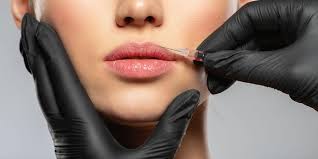The desire for smooth, youthful skin is timeless. While many assume that achieving a more youthful appearance requires going under the knife, a variety of effective non-surgical treatments are available.
Chemical Peels
A chemical peel is a skin-resurfacing procedure where a chemical solution is applied to the skin, causing it to exfoliate and eventually peel off. The new, regenerated skin is typically smoother, less wrinkled, and more even in tone.
How Chemical Peels Work
The process involves applying an acidic solution to the skin, which removes the damaged outer layers. This stimulates the growth of new, healthy skin cells. Peels can vary in strength, from light, superficial peels that require little to no downtime to deep peels that offer more dramatic results but require a longer recovery period.
Types of Chemical Peels
- Light (Superficial) Peels:These use mild acids like alpha-hydroxy acid (AHA) to gently exfoliate only the outermost layer of skin. They are great for improving rough texture, fine lines, and uneven skin tone. A series of treatments is often recommended for the best results.
- Medium Peels:Using acids like trichloroacetic acid (TCA) or glycolic acid, these peels penetrate the outer and middle layers of skin. They are more effective for treating moderate wrinkles, age spots, and acne scars.
- Deep Peels:These peels use stronger chemicals like phenol to penetrate the middle layer of skin more deeply. A deep peel produces the most dramatic results but also involves a significant recovery time. They are used to treat deep wrinkles, extensive sun damage, and pre-cancerous growths.
Benefits of Chemical Peels
- Improves skin texture and tone
- Reduces fine lines and wrinkles
- Minimizes the appearance of sun damage and age spots
- Helps control acne and reduces scarring
Microdermabrasion
Microdermabrasion is a minimally invasive procedure used to renew overall skin tone and texture. It can improve the appearance of sun damage, wrinkles, fine lines, age spots, acne scarring, and other skin-related concerns.
How Microdermabrasion Works
The procedure uses a special applicator with an abrasive surface to gently sand away the thick outer layer of the skin to rejuvenate it. Another common microdermabrasion technique involves spraying fine particles of aluminum oxide or sodium bicarbonate with a vacuum/suction to accomplish the same outcome.
It is a simple, quick, and painless procedure that requires no downtime. Your skin may be slightly red for a few hours after the treatment, but you can return to your daily activities immediately.
What It Addresses
- Dull complexion
- Uneven skin tone and texture
- Age spots and dark spots
- Fine lines and wrinkles
- Superficial acne scars
Laser Resurfacing
Laser resurfacing is a treatment that uses focused light to improve skin texture and appearance. It can be used to treat a wide range of skin issues, from wrinkles and fine lines to scars and sun spots.
How Laser Resurfacing Works
This technology directs short, concentrated pulsating beams of light at irregular skin, precisely removing the skin layer by layer. This process, known as ablation, stimulates the growth of new collagen fibers, resulting in smoother, firmer skin.
Types of Laser Treatments
- Ablative Lasers:These lasers, such as CO2 or Erbium lasers, remove thin layers of skin with high precision. They are more aggressive and require a longer recovery time, but they provide the most significant results for deep wrinkles and severe sun damage.
- Non-Ablative Lasers:These lasers stimulate collagen growth and tighten the underlying skin without removing the top layer. They have less downtime but typically require multiple sessions to achieve the desired results. Examples include pulsed-dye lasers and fractional lasers.
Injectables (Botox and Fillers)
Injectables are among the most popular non-surgical cosmetic treatments. They are highly effective for reducing the appearance of wrinkles and restoring lost volume in the face.
How They Work
- Botox (Botulinum Toxin):Botox works by temporarily paralyzing the muscles responsible for creating dynamic wrinkles, such as crow’s feet, forehead lines, and frown lines. By relaxing these muscles, the overlying skin smooths out, reducing the appearance of wrinkles.
- Dermal Fillers:Fillers, typically made from hyaluronic acid, are used to add volume and fullness to the skin. They can fill in deep lines, plump up lips, enhance cheekbones, and restore volume to hollowed areas of the face.
Expected Results
The results from Botox usually last for 3 to 4 months, while fillers can last anywhere from 6 months to over a year, depending on the type of filler used and the area treated.
Microneedling
Microneedling, also known as collagen induction therapy, is a procedure that involves using fine needles to create hundreds of tiny, invisible puncture wounds in the top layer of skin. This might not sound appealing, but the process is minimally invasive and highly effective.
The Microneedling Process
A device with fine needles is used to create micro-injuries in the skin. This triggers the body’s natural wound-healing process, resulting in cell turnover and increased collagen and elastin production. As the skin repairs itself, it becomes thicker, smoother, and more youthful-looking. A popular and advanced form of this treatment is Morpheus8 in Riverton, UT, which combines microneedling with radiofrequency energy for enhanced skin tightening and rejuvenation.
Benefits of Microneedling
- Reduces the appearance of fine lines and wrinkles
- Improves skin texture and reduces pore size
- Fades acne scars and other types of scarring
- Evens out skin tone and reduces hyperpigmentation
- Enhances the absorption of skincare products
Conclusion
Choosing the right non-surgical treatment depends on your specific skin concerns, goals, and lifestyle. While chemical peels and microdermabrasion are excellent for surface-level issues, laser resurfacing and microneedling can address deeper concerns.
